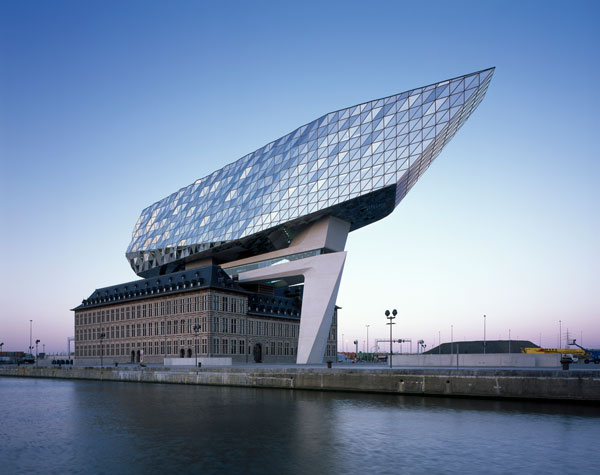
Born in Baghdad in 1950 to a father who was co-founder of the Iraqi Democratic Party, and a mother who was a well-acclaimed artist, perhaps Zaha Hadid was born on a path to success. After leaving Iraq and finishing her studies in Beirut, the aspiring 22 year old architect moved to England and studied at the Architectural Association School of Architecture. Her peers and teachers took notice of her remarkable talent. Former professor and influential architect, Rem Koolhaas, even called her a “planet in her own orbit”
Shortly after graduating, Hadid worked for her former professors in the Netherlands, and eventually opened a firm of her own called “Zaha Hadid Architects” in 1980. She taught architecture and frequently documented her sketches in artistic journals. Although these works were rarely actualized, Hadid fought hard to remain on the radar until the rest of the world took notice.
Breaking through the ‘Boy’s Club’
Hadid’s successes were never handed to her on a silver platter. Especially as a woman with Arab roots, working in a traditionally male-dominated industry, her journey to the top was challenging.
Throughout her career, she stood on the sidelines and felt excluded from what she described as the “Boys Club”. This meant, being left out of activities her colleagues engaged in.”They go fishing, they go golfing, they go out and have a drink. And as a woman you’re excluded from that bonding. It’s a big difference”, she exclaims.

(Image source: www.thetelegraph.co.uk)
She was not only excluded from colleague camaraderie activities, she was also discriminated against on a professional level. This manifested itself in architecture projects not being actualized only because of who she was.
A prime example of this was her experience with the Cardiff Opera House Design. Hadid’s entries for the Cardiff Opera House were commissions she had won twice. However, both times did not move forward because of local politicians not wanting to support her. After putting the work in to create the design and actually winning the commission, her designs we abruptly discarded and the project assigned to other architects.
She explained it as, “My work is not within the accepted box. Maybe because I am a woman. Also an Arab. There was a certain prejudice about these things”. Luckily, she never allowed the adversity to get to her and continued blazing down her path despite the attempts at breaking her spirit or threatening her young career.
Pritzker Prize winner
As time moved forward, so did Hadid. Projects like the Contemporary Arts Center in Cincinnati and the Bergisel Ski Jump, made a highly respected name for her in the industry. So much so, that she won the 2004 Pritzker Architecture Prize (equivalent to the Nobel Prize for architecture), officially becoming the first woman to receive the award.
 (Image source: www.thefashionglobe.com)
(Image source: www.thefashionglobe.com)
Although it wasn’t long before this too, became an experience tinged with gender-bias. In her book titled “Where Are the Women Architect’s?” Historian and Professor of architecture, Despina Stratigakos, touches on the unbalanced treatment of Hadid during her career, specifically on the questions she was asked following her win of the Pritzker Prize. Questions such as, “Do you think you deserved to win?” or this question that appeared in the Guardian:
“Where’s the ball-breaking harridan barking abuse in Arabic into her mobile as she wafts into her north-London studio in vertiginous heels, before snarling unpleasant things to her staff in terrifyingly idiomatic Anglo-Saxon?”.
Stratigakos believed this double-standard rhetoric would never have been uttered to the 25 Pritzker winners before her.

(Image source: Helene Binet)
However, instead of crushing Hadid’s ambitions, these experiences did the exact opposite. They shaped her iconically strong and stern personality. Hadid was a “tough go-getter”, somebody that would let no one stand in her way when she wanted something. In an industry filled with men, Zaha refused to be a polite, predictable woman. She pushed harder than anyone before her had done. And, she pushed those who worked for her just as hard as she pushed herself.
On being an Arab woman
Zaha came from a community where all people were accepted, growing up side by side with both Christians and Jews, and witnessing women rise to top ranks of important careers. As a liberal politician, her father happily encouraged her to follow her dreams.
However, as she left her community in Iraq and chased her dream in London, she was genuinely surprised by her having to wear her ethnicity and gender on her sleeve for the rest of her career. She states, “You cannot believe the enormous resistance I’ve faced just for being an Arab, and a woman on top of that. It is like a double-edged sword. The moment my woman-ness is accepted, the Arab-ness seems to become a problem.”

(Image source: www.archdaily.com)
When asked about being called a ‘Woman Architect’, she said “I used to not like being called a ‘woman architect’: I’m an architect, not just a woman architect. Guys used to tap me on the head and say, ‘You are okay for a girl.’ But I see the incredible amount of need from other women for reassurance that it could be done, so I don’t mind that at all.”
She never saw herself as a role model and only advocated for hard work; however, with women comprising half of architecture students today, it’s clear that Zaha has left her mark.
